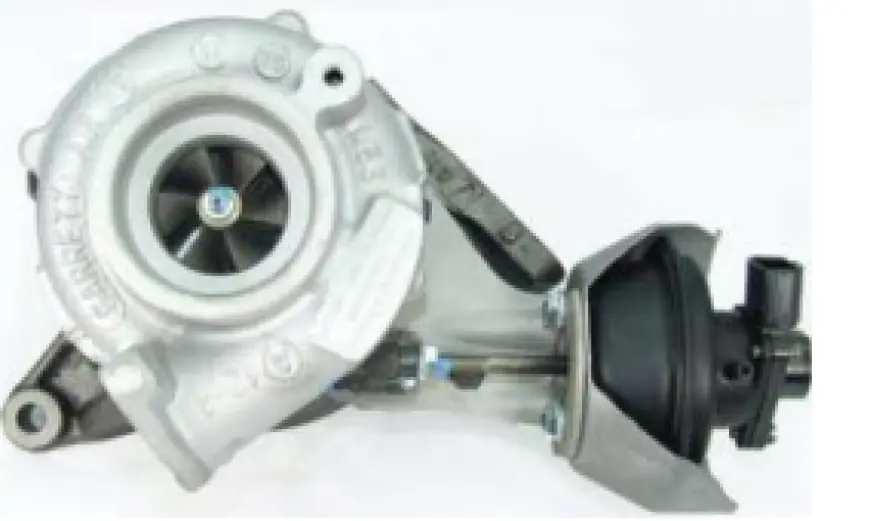Turbo Refurbishment: A Smart Approach to Engine Longevity
Turbochargers have transformed the way engines perform. By delivering additional compressed air into the combustion chamber, they enable smaller engines to achieve higher power outputs while reducing fuel consumption and emissions. For drivers, this translates into a more responsive vehicle and improved efficiency.

Turbochargers have transformed the way engines perform. By delivering additional compressed air into the combustion chamber, they enable smaller engines to achieve higher power outputs while reducing fuel consumption and emissions. For drivers, this translates into a more responsive vehicle and improved efficiency. Yet, because of the intense operating conditions, turbos inevitably face wear over time. When that happens, turbo refurbishment becomes an effective solution to restore performance and extend the lifespan of both the turbocharger and the engine it supports.
The Importance of Turbochargers in Modern Engines
Automotive technology has shifted dramatically in recent decades, largely driven by stricter emissions laws and the need for greater efficiency. Turbochargers play a vital role in this transformation:
-
Improved fuel economy: By enabling more efficient combustion, turbocharged engines can deliver the same power as larger engines while consuming less fuel.
-
Lower emissions: Meeting environmental regulations often depends on the added efficiency of turbocharged systems.
-
Performance boost: From family cars to performance vehicles, the extra power provided by turbos enhances the driving experience.
Without a well-functioning turbocharger, a modern engine cannot deliver on its promise of power and efficiency.
What Turbo Refurbishment Involves
Turbo refurbishment is the process of restoring a used turbocharger to near-original performance standards. Rather than focusing on a single failing part, refurbishment examines the turbo as a whole—mechanical components, seals, bearings, and sometimes electronic controls.
The objective is to return the turbocharger to a condition where it can reliably handle high speeds, extreme temperatures, and demanding driving environments. Refurbishment also includes detailed inspections and balancing processes that ensure the turbo can function safely for thousands of miles ahead.
Why Turbo Refurbishment Matters
Extending Service Life
Turbochargers are designed to last for many years, but wear is inevitable. Refurbishment maximizes their usable lifespan, allowing vehicle owners to benefit from the original component for as long as possible.
Supporting Sustainability
In an age of environmental awareness, refurbishing rather than replacing reduces waste. It limits the demand for new raw materials and energy-intensive manufacturing processes, making it a greener choice.
Maintaining Performance
A declining turbo means reduced engine efficiency, sluggish acceleration, and higher fuel consumption. Refurbishment restores optimal airflow and performance, improving the overall driving experience.
Signs That Indicate Turbo Wear
Drivers often notice subtle performance changes when a turbocharger is no longer operating at its best. Key indicators include:
-
Reduced acceleration and loss of engine power.
-
Excessive smoke from the exhaust, often blue or black in color.
-
Whining or whistling noises when the turbo is spooling.
-
Warning lights linked to boost pressure issues.
-
Noticeably higher fuel usage.
These symptoms signal the need for attention before more severe damage develops.
Technical Elements of Turbo Refurbishment
Refurbishment requires precision and advanced tools. A few of the essential aspects include:
-
Rotor balancing: Since turbochargers operate at extreme speeds, even microscopic imbalance can cause premature failure. Balancing is critical.
-
Seal and bearing renewal: Bearings must withstand enormous rotational forces, while seals prevent oil leakage that can damage both the turbo and the engine.
-
Housing inspection: Any damage to the turbine or compressor housing can disrupt airflow.
-
Variable geometry checks: Many modern turbos use adjustable vanes to optimize airflow at different engine speeds, requiring calibration during refurbishment.
-
Electronic actuator testing: Refurbishment also accounts for modern electronic controls that manage boost pressure.
This combination of mechanical and electronic expertise is why refurbishment is a specialized field.
Benefits for Different Vehicle Owners
Everyday Drivers
For individuals, refurbishment restores smooth performance and reduces fuel expenses. It helps maintain the car’s original efficiency without the expense of full replacement.
Commercial Fleets
Businesses running vans, lorries, or buses can avoid costly downtime by refurbishing turbos as part of preventative maintenance. This keeps vehicles reliable and reduces long-term running costs.
Environmental Stewards
Choosing refurbishment supports circular economy principles—repairing, reusing, and reducing waste rather than discarding valuable components.
When Is Refurbishment the Best Option?
Refurbishment is most beneficial when the turbocharger shows signs of wear but is not completely beyond repair. In cases of severe damage, replacement may be unavoidable, but refurbishment often proves to be the most practical choice. It is especially suitable for:
-
Maintaining factory specifications without resorting to aftermarket alternatives.
-
Prolonging the life of original equipment.
-
Reducing environmental impact while keeping vehicles on the road.
The Role of Specialist Expertise
Turbochargers are finely tuned systems. Because of the precision required in balancing and testing, refurbishment should only be performed by professionals with specialized knowledge and equipment. Attempting to address turbo issues without the right expertise risks damaging both the turbocharger and the engine. For that reason, it’s always advisable to find a specialist near you who can properly assess and refurbish the unit.
The Future of Turbo Refurbishment
With automotive technology advancing rapidly, turbo refurbishment is evolving as well. Innovations on the horizon include:
-
Electric-assist turbos: Using electric motors to reduce lag and improve responsiveness.
-
Hybrid turbo systems: Integrating with electric drivetrains to enhance efficiency.
-
Advanced materials: Employing lightweight composites that can handle higher stress and temperatures.
These changes mean refurbishment practices will continue adapting, ensuring that turbos remain reliable throughout their extended lifespans.
Conclusion
Turbochargers have become integral to modern engines, balancing performance, fuel economy, and reduced emissions. When they begin to wear, turbo refurbishment offers a cost-effective, environmentally conscious, and performance-restoring solution. By extending the lifespan of existing components, refurbishment helps drivers, businesses, and the planet alike.
As automotive technology advances, the role of refurbishment will only become more important—preserving efficiency, reducing waste, and ensuring that engines perform at their peak for years to come.
What's Your Reaction?
 Like
0
Like
0
 Dislike
0
Dislike
0
 Love
0
Love
0
 Funny
0
Funny
0
 Angry
0
Angry
0
 Sad
0
Sad
0
 Wow
0
Wow
0



















































